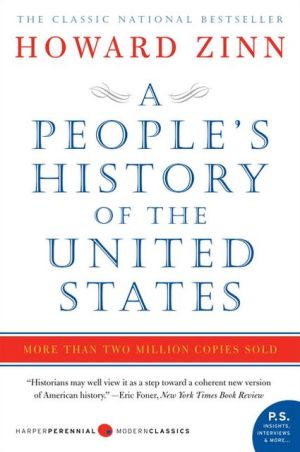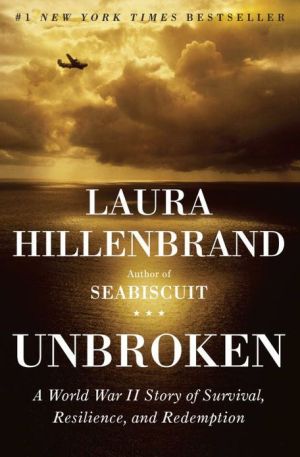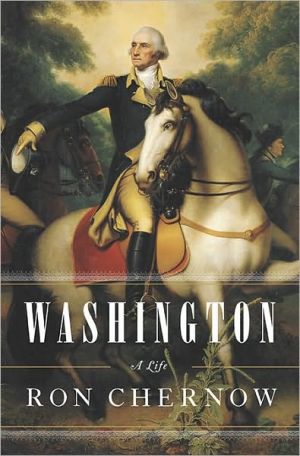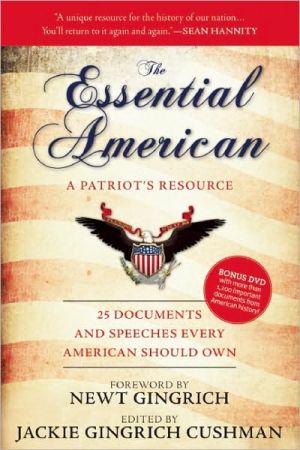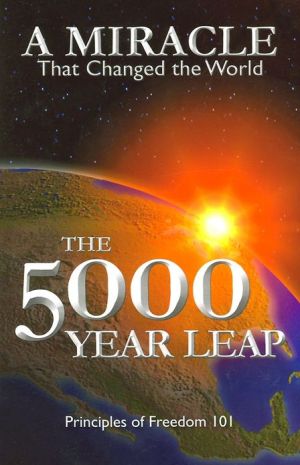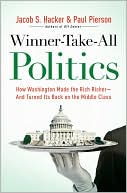A People's History of the United States: 1492-Present
Known for its lively, clear prose as well as its scholarly research. A People's History of the United States is the only volume to tell America's story from the point of view of -- and in the words of -- America's women. factory workers. African Americans. Native Americans, working poor, and immigrant laborers. Revised and updated with two new chapters covering Clinton's presidency, the 2000 Election, and the "war on terrorism." A People's History of the United States features insightful...
Search in google:
"There is an underside to every age about which history does not often speak, because history is written from records left by the privileged.""A brilliant and moving history of the American people from the point of view of those who have been exploited politically and economically and whose plight has been largely omitted from most histories." Library Journal A classic since its original landmark publication in 1980, Howard Zinn's A People's History of the United States is the first scholarly work to tell America's story from the bottom up from the point of view of, and in the words of, America's women, factory workers, African-Americans, Native Americans, the working poor, and immigrant laborers. From Columbus to the Revolution to slavery and the Civil War from World War Two to the election of George W. Bush and the "War on Terror" A People's History of the United States is an important and necessary contribution to a complete and balanced... Eric Foner Professor Zinn writes with an enthusiasm rarely encountered in the leaden prose of academic history, and his text is studded with telling quotations from labor leaders, war resisters and fugitive slaves. There are vivid descriptions of events that are usually ignored, such as the great railroad strike of 1877 and the brutal suppression to the Philippine independence movement at the turn of this century. Professor Zinn's chapter on Vietnam—bringing to life once again the free-fire zones, secret bombings, massacres and cover-ups—should be required reading for a new generation of students now facing conscription. —New York Times Book Review
Chapter One\ \ Columbus, the Indians, and Human Progress\ \ \ \ Arawak men and women, naked, tawny, and full of wonder, emerged from their villages onto the island's beaches and swam out to get a closer look at the strange big boat. When Columbus and his sailors came ashore, carrying swords, speaking oddly, the Arawaks ran to greet them, brought them food, water, gifts. He later wrote of this in his log:\ \ They . . . brought us parrots and balls of cotton and spears and many other things, which they exchanged for the glass beads and hawks' bells, They willingly traded everything they owned . . . They were well-built, with good bodies and handsome features . . . They do not bear arms, and do not know them, for I showed them a sword, they took it by the edge and cut themselves out of ignorance. They have no iron. Their spears are made of cane . . . They would make fine servants . . . With fifty men we could subjugate them all and make them do whatever we want.\ \ These Arawaks of the Bahama Islands were much like Indians on the mainland, who were remarkable (European observers were to say again and again) for their hospitality, their belief in sharing. These traits did not stand out in the Europe of the Renaissance, dominated as it was by the religion of popes, the government of kings, the frenzy for money that marked Western civilization and its first messenger to the Americas, Christopher Columbus.\ \ Columbus wrote:\ As soon as I arrived in the Indies, on the first Island which I found, I took some of the natives by force in order that they might learn and might give meinformation of whatever there is in these parts.\ \ The information that Columbus wanted most was: Where is the gold? He had persuaded the king and queen of Spain to finance an expedition to the lands, the wealth, he expected would be on the other side of the Atlantic—the Indies and Asia, gold and spices. For, like other informed people of his time, he knew the world was round and he could sail west in order to get to the Far East.\ Spain was recently unified, one of the new modem nation-states, like France, England, and Portugal. Its population, mostly poor peasants, worked for the nobility, who were 2 percent of the population and owned 95 percent of the land. Spain had tied itself to the, Catholic Church, expelled all the Jews, driven out the Moors. Like other states of the modem world, Spain sought gold, which was becoming the new mark of wealth, more useful than land because it could buy anything.\ There was gold in Asia, it was thought, and certainly silks and spices, for Marco Polo and others had brought back marvelous things from their overland expeditions centuries before. Now that the Turks had conquered Constantinople and the eastern Mediterranean, and controlled the land routes to Asia, a sea route was needed. Portuguese sailors were working their way around the southern tip of Africa. Spain decided to gamble on a long sail across an unknown ocean.\ In return for bringing back gold and spices, they promised Columbus 10 percent of the profits, governorship over new-found lands, and the fame that would go with a new title: Admiral of the Ocean Sea. He was a merchant's clerk from the Italian city of Genoa, part-time weaver (the son of a skilled weaver), and expert sailor. He set out with three sailing ships, the largest of which was the Santa Maria, perhaps 100 feet long, and thirty-nine crew members.\ Columbus would never have made it to Asia, which was thousands of miles farther away than he had calculated, imagining a smaller world. He would have been doomed by that great expanse of sea. But he was lucky. One-fourth of the way there he came upon an unknown, uncharted land that lay between Europe and Asia—the Americas. It was early October 1492, and thirty-three days since he and his crew had left the Canary Islands, off the Atlantic coast of Africa. Now they saw branches and sticks floating in the water. They saw flocks of birds. These were signs of land. Then, on October 12, a sailor called Rodrigo saw the early morning moon shining on white sands, and cried out. It was an island in the Bahamas, the Caribbean sea. The first man to sight land was supposed to get a yearly pension of 10,000 maravedis for life, but Rodrigo never got it. Columbus claimed he had seen a light the evening before. He got the reward.\ So, approaching land, they were met by the Arawak Indians, who swam out to greet them. The Arawaks lived in village communes, had a developed agriculture of corn, yams, cassava. They could spin and weave, but they had no horses or work animals. They had no iron, but they wore tiny gold ornaments in their ears.\ This was to have enormous consequences: it led Columbus to take some of them aboard ship as prisoners because he insisted that they guide him to the source of the gold. He then sailed to what is now Cuba, then to Hispaniola (the island which today consists of Haiti and the Dominican Republic). There, bits of visible gold in the rivers, and a gold mask presented to Columbus by a local Indian chief, led to wild visions of gold fields.\ On Hispaniola, out of timbers from the Santa Maria, which had run aground, Columbus built a fort, the first European military base in the Western Hemisphere. He called it Navidad (Christmas) and left thirty-nine crewmembers there, with instructions to find and store the gold. He took more Indian prisoners and put them aboard his two remaining ships. At one part of the island he got into a fight with Indians who refused to trade as many bows and arrows as he and his men wanted. Two were run through with swords and bled to death. Then the Nina and the Pinta set sail for the Azores and Spain. When the weather turned cold, the Indian prisoners began to die...
1Columbus, the Indians, and Human Progress12Drawing the Color Line233Persons of Mean and Vile Condition394Tyranny Is Tyranny595A Kind of Revolution776The Intimately Oppressed1037As Long as Grass Grows or Water Runs1258We Take Nothing by Conquest, Thank God1499Slavery Without Submission, Emancipation Without Freedom17110The Other Civil War21111Robber Barons and Rebels25312The Empire and the People29713The Socialist Challenge32114War Is the Health of the State35915Self-help in Hard Times37716A People's War?40717"Or Does It Explode?"44318The Impossible Victory: Vietnam46919Surprises50320The Seventies: Under Control?54121Carter-Reagan-Bush: The Bipartisan Consensus56322The Unreported Resistance60123The Coming Revolt of the Guards63124The Clinton Presidency64325The 2000 Election and the "War on Terrorism"675Afterword683Bibliography689Index709
\ From Barnes & NobleAlmost 700 pages long, this completely revised and updated edition brings a populist classic kicking and screaming into the 21st century. Written by an activist historian, A People's History presents dimensions of American history formerly glossed over in the high textbooks. (P.S. In previous editions, this lively book has sold more than 300,000 copies!)\ \ \ \ \ Eric FonerProfessor Zinn writes with an enthusiasm rarely encountered in the leaden prose of academic history, and his text is studded with telling quotations from labor leaders, war resisters and fugitive slaves. There are vivid descriptions of events that are usually ignored, such as the great railroad strike of 1877 and the brutal suppression to the Philippine independence movement at the turn of this century. Professor Zinn's chapter on Vietnam—bringing to life once again the free-fire zones, secret bombings, massacres and cover-ups—should be required reading for a new generation of students now facing conscription. —New York Times Book Review\ \ \ Howard FastOne of the most important books I have ever read in a long life of reading...It's a wonderful, splendid book—a book that should be read by every American, student or otherwise, who wants to understand his country, its true history, and its hope for the future.\ \ \ \ \ Publishers WeeklyAccording to this classic of revisionist American history, narratives of national unity and progress are a smoke screen disguising the ceaseless conflict between elites and the masses whom they oppress and exploit. Historian Zinn sides with the latter group in chronicling Indians' struggle against Europeans, blacks' struggle against racism, women's struggle against patriarchy, and workers' struggle against capitalists. First published in 1980, the volume sums up decades of post-war scholarship into a definitive statement of leftist, multicultural, anti-imperialist historiography. This edition updates that project with new chapters on the Clinton and Bush presidencies, which deplore Clinton's pro-business agenda, celebrate the 1999 Seattle anti-globalization protests and apologize for previous editions' slighting of the struggles of Latinos and gays. Zinn's work is an vital corrective to triumphalist accounts, but his uncompromising radicalism shades, at times, into cynicism. Zinn views the Bill of Rights, universal suffrage, affirmative action and collective bargaining not as fundamental (albeit imperfect) extensions of freedom, but as tactical concessions by monied elites to defuse and contain more revolutionary impulses; voting, in fact, is but the most insidious of the "controls." It's too bad that Zinn dismisses two centuries of talk about "patriotism, democracy, national interest" as mere "slogans" and "pretense," because the history he recounts is in large part the effort of downtrodden people to claim these ideals for their own. (Feb. 16) Copyright 2003 Reed Business Information.\ \
